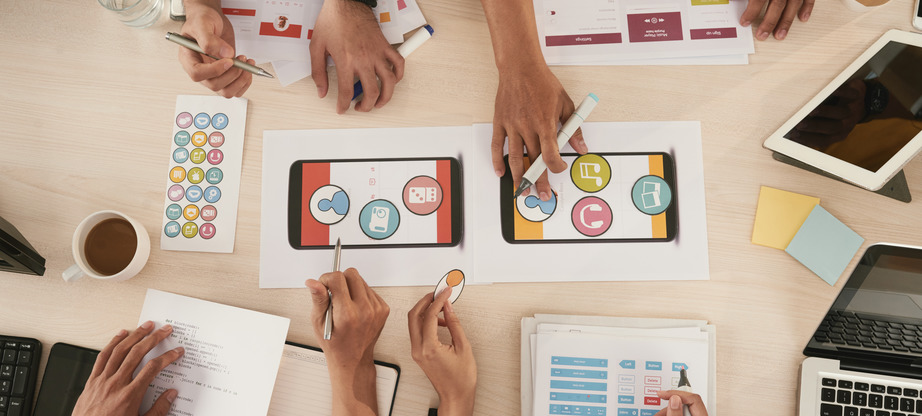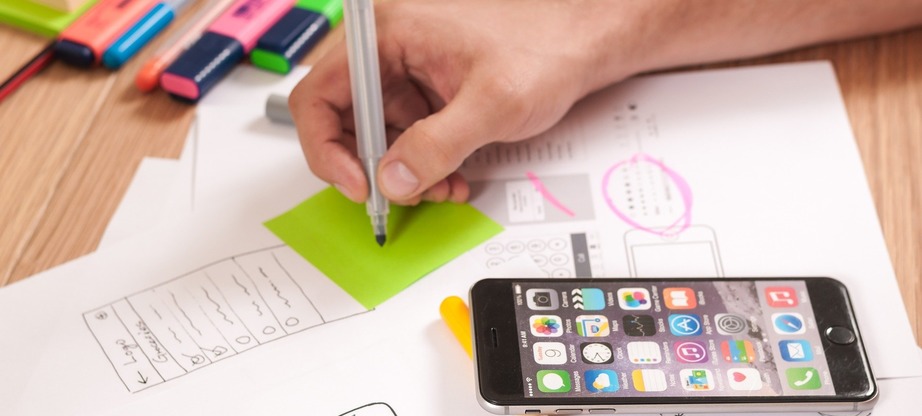User Flows in Design – Everything You Need to Know
For those who are unfamiliar, user flow is a series of steps a user takes so that they can achieve a particular goal. The concepts of UX, user flow, and overall product satisfaction are all directly connected with one another. These notions are of paramount importance whether you’re talking about websites or app user flow. A user flow diagram usually involves a name, steps, user profiles, and a detailed description of what happens at each stage of client interaction. User flows are a method through which you can segment and define your digital products, customer experience, your website, or your app.
User flows examples usually describe the steps that potential customers take to access a function or perform a task in your application. Every app has a user flow model. We could be talking about a complex engineering application or something as rudimentary as a tea timer. There will always be a sequence of steps your user has to take. Even in the simplest apps, flow is a vital part of UX. In fact, it can hold the key to the app’s appeal, or lack thereof. If you’re thinking about whether it’s worth it to create a user flow chart, you should keep this in mind.
First Fundamental – User Flows Reveal Purpose
What is the user flow? It can be explained through three fundamentals. First, a user flow should have a moniker that describes its purpose. The name will be the goal your users achieve by completing the steps. Naming your user flows is a step that you should never neglect.
Second Fundamental – User Flows Go in One Direction
Always stick to one direction and limit the decision points in your user flows. This is how you can avoid sprawling sitemaps and free-form, clickable prototypes that can potentially confuse the user.
Third Fundamental – User Flows Represent a Completed Task
To keep your app or other digital product’s design organized, the scope of each user flow should be a single task or goal that your potential customer has. If the user flow is only a fragment of the overall goal, then it loses much of its power. Unfocused user goals lose their meaning and fail in their purpose. Make sure you’ve included all of the information you need to show the reason for the user flow’s design methodology.
Where Does User Flow Fit in the UX Design Process?
UX flows are synthesized early during your design planning stages. This would be after user research has been conducted. They form a critical part of the foundation on which your product is built. They can also serve as a reference for your other designers if you have a team working on the app or website.
Once you have come up with your data from usability testing, user flows help determine how many screens are needed, the order in which they should appear, and what components should be present. When you get to create user flow, your persona development, affinity, and empathy mapping should all be complete. Flowcharts can be made for existing interfaces to enhance the user’s experience or take care of any confusion they’re potentially experiencing. A detailed user interface flow chart can reveal much about what a user is thinking and experiencing when they first come across your website or app. A UX user flow diagram serves essentially this same purpose.
User flows would be considered part of your deliverables. These are the elements you provide to the client and design team when your product is finished being developed. Coming up with a detailed flowchart can help validate your design decisions to your colleagues. Keep in mind, though, that designs are constantly being revised. User flows can be revisited and edited if you feel that is what’s necessary.
Why User Flows Matter
User flows are an excellent tool to have available as a designer. They can help you evaluate the efficiency and simplicity of your project.
Why User Flows Should be a Top Priority for You
It Determines Product Success
The mark of a successful website or app is in its design intuitiveness. When users can flow through an interface without confusion or hesitation, it is more likely that they will buy the client’s product or visit the website again.
Even if you are going to develop MVP for your product first and then build the entire functional design, you need to determine and care about the main user flow for the first product release. The clear and fluid user flow even for MVP is a must that clients can understand what your product is all about. Keep in mind that sites and apps that have smooth and sensible user flow are one that your clients and potential clients will love.
Faster Iterations and Better Product Quality
User flows transformed into wireframes allow for speedier iteration for the development team. These help them to understand better what features and functions the product requires, and also which ones are unnecessary.
Your team will function more efficiently if they have a real-time sense of what customers are experiencing when they use your app or website. That is why user testing is also a smart option for you at this stage. Make sure that those involved with this testing process are individuals who might engage with your product in real life.
Better Communication
User flow tools like flowcharts help other design team members convey to partners and investors interface layouts. By providing a visual representation of what your consumers will encounter, you can ensure that user experience will be free from frustration and gratifying.
These tools will also allay any worries that investors might have. When someone has put a good deal of money into your business, it’s always best to include them in the design process as much as possible. Let them see that your product design model is sensible and getting positive feedback from focus groups on its way to market. That is going to make them feel better about their financial involvement.
Consistent User Experience Depends on Flow
Apps aren’t isolated tools that only have to be internally consistent. They also exist within a broader context. Even if you’re creating a one-off app on your own, you still have to keep user expectations around flow in mind.
When you design for flow, you need to think about apps and websites that already exist. You don’t want to blatantly copy the look or feel of any app or site that is within your niche. At the same time, though, there should be some familiar elements. Try studying the most successful apps and websites that are already out there. Ask yourself what works best about them, and try to incorporate that into your plans.
Better Client Communication
User flows are a great way for clients to understand the site’s architecture if you’re developing a design for someone else. They’re also handy when developing technical specifications. You can use them to explain each aspect of functionality a user will encounter when running through each flow.
User Flows As a Key Part of the Design Process
Understanding user flow helps inform the UX design process. The overall process is going to be different for every organization, but it usually involves some version of these five stages
Research
During the research phase, you think about the business problem that your product will solve. Your research is meant to gain insights from potential users. Ask what “pain point” a user might have that you are trying to alleviate with your product. How expediently does your product get rid of that problem? Techniques used during this phase might include user or stakeholder interviews, competitor analyses, or coming up with client personas. Client personas may include things like what gender is more likely to engage with your app or website. You might look at their income level, how much education they have, what their goals or aspirations are, etc. It is through this knowledge that you will be better able to communicate with and market your products to them.
Planning
The planning stage is where UX flow comes in. At this point, you will have moved on from thinking about consumer needs at a theoretical level. You’ll be visualizing your product and how it will meet those needs. Techniques like card sorting, use cases, and user flow charts can help you understand how your product should eventually fit together. If there are any elements that you determine to be extraneous at this stage, then you can discard them. The resulting product will be stronger for it.
Design
Once you’ve reached the design stage, you’ll have moved past the ideation phases. You’ll be ready to plan the exact appearance of your user interface. You might devise a user interface flow diagram to help you do so. A user flow sketch or a series of them would also not be a bad idea. By using tools such as sketches, wireframes, mood boards, and user flow charts, you can apply the insights you’ve gained. You’ll also leverage them to create a stellar product prototype. Your prototype does not have to be market-ready, but ideally, it should not be far off from what the finished product is going to be.
Testing
Now you can add the finishing touches to what you’ve done so far and put your initial prototypes to the test. User testing and A/B testing are two of your best techniques as you’re optimizing your final product and preparing for launch. You could also employ a heuristic evaluation approach. This is a review done by your UX experts to complement user feedback.
Production and Feedback
After production is finalized, you’ll be ready for the beta launch. This is where you will put out your product as a limited release. You will closely monitor user feedback during this stage. If you need to make any fundamental changes to your product’s design, it’s better that you do so now.
How to Improve User Flows
Analyzing each user flow provides UX designers with an opportunity to evaluate what is and isn’t working on the path to conversion. Reviewing the data will show where people drop off and exit your app or website. Ultimately, this provides the information needed for a UX designer to rethink, redesign, and improve on what they have. Perfecting user interface flow is not something that happens overnight. Like any element during app or website development, it requires planning, execution, and lots of reiteration.
In the end, though, all of that work is worth it. Getting it right and choosing the right web design firm will ensure you’ll create a successful, popular application or website that people will want to engage with again and again. When you create a user flow that is truly intuitive, you’ll know that your design ideology has been successful. Your investors will hopefully get a good rate of return on the money they put in. Everyone involved with the project will be compensated, not just financially, but also with the knowledge that you’ve created something that’s going to propel your company and brand to greater heights.



